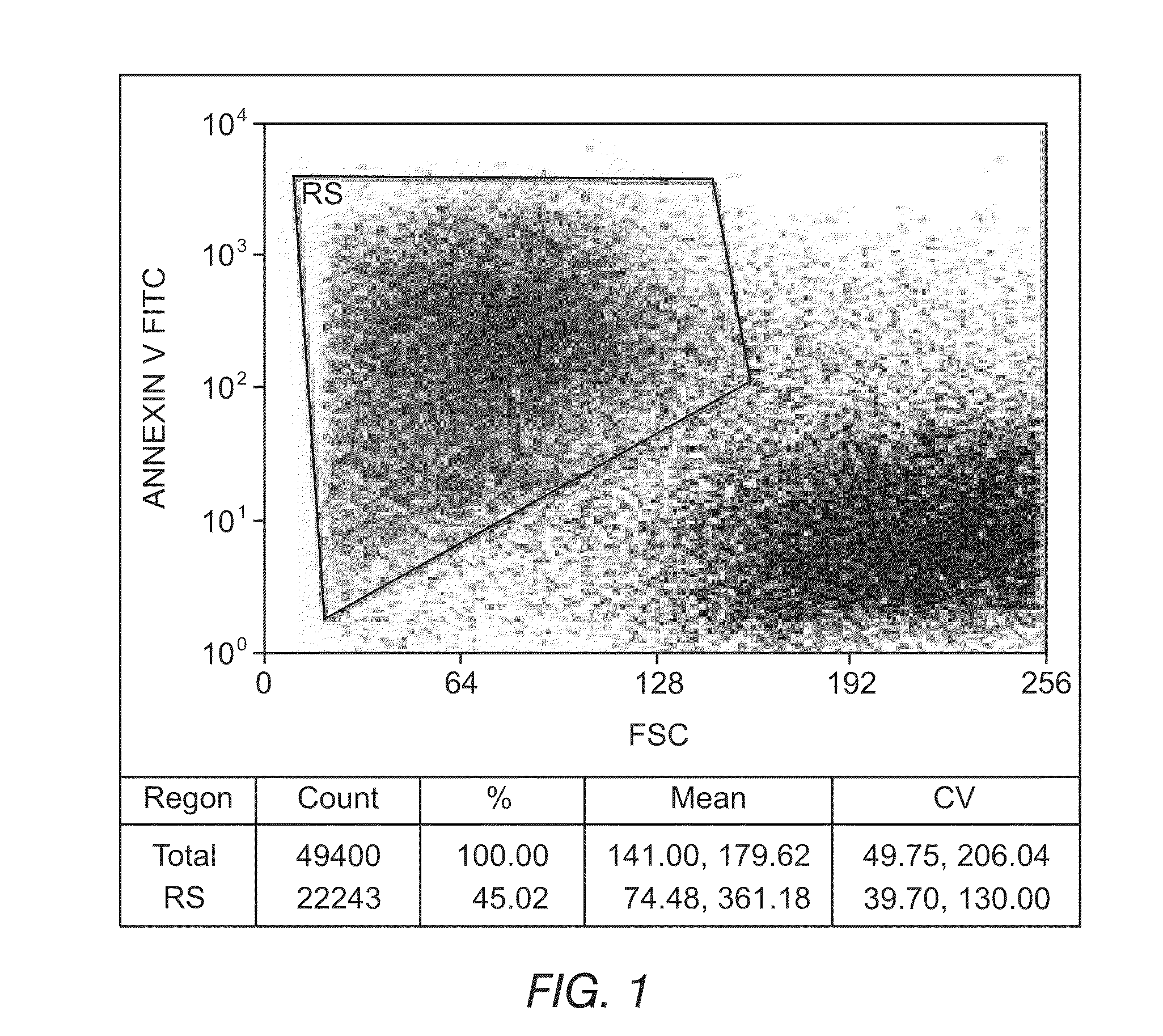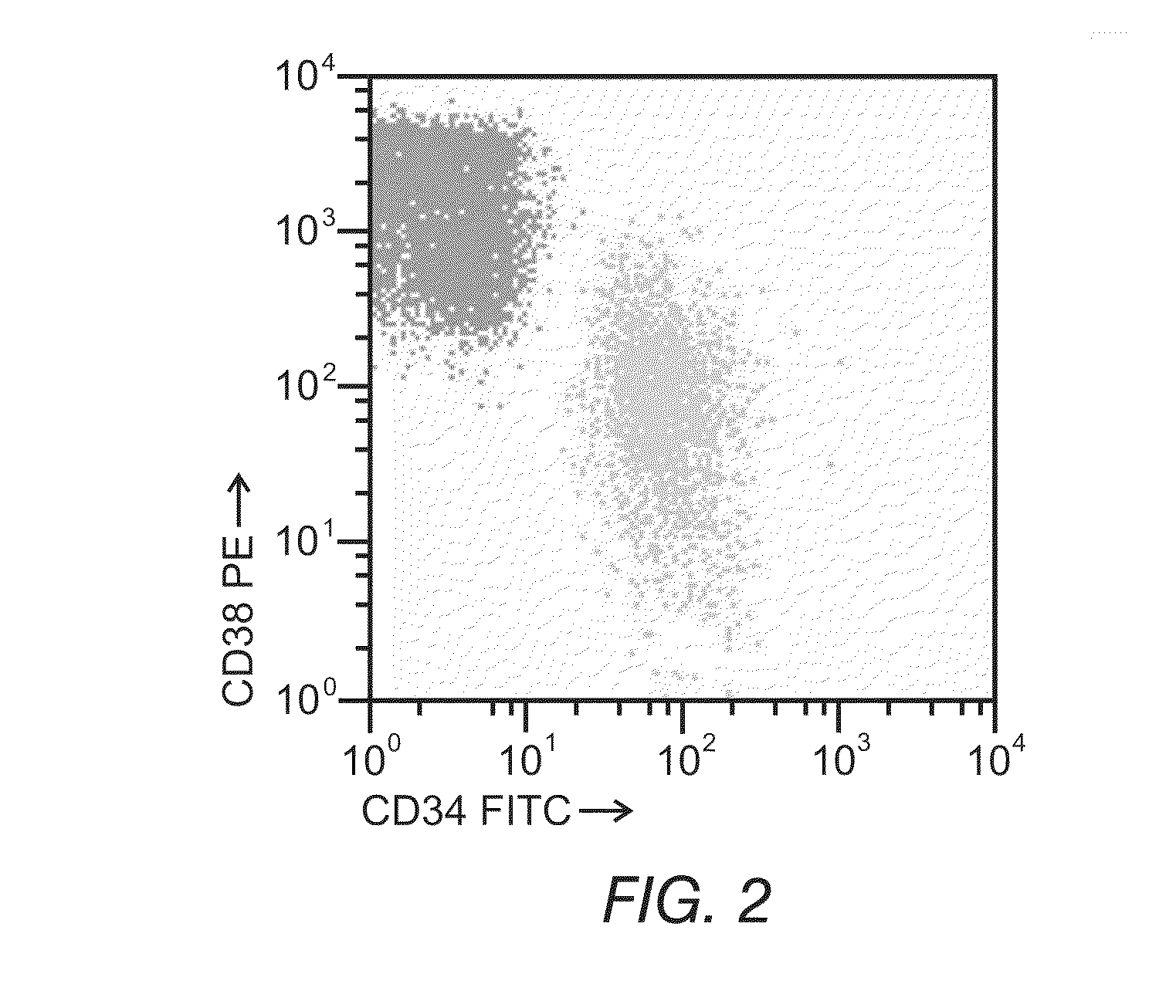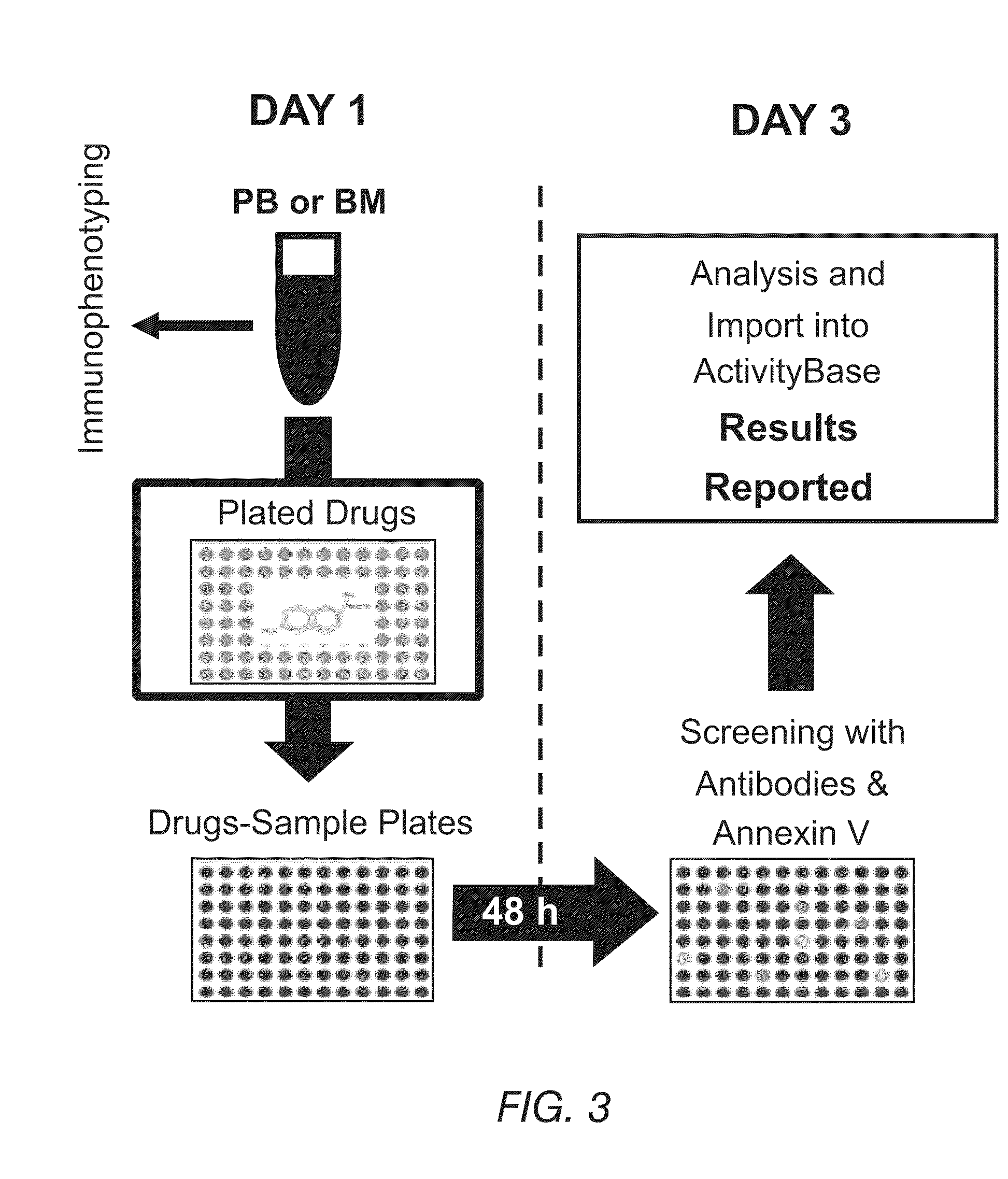Methods for providing personalized medicine test ex vivo for hematological neoplasms
a technology of hematological neoplasms and personalized medicine, which is applied in the direction of biocide, drug composition, instruments, etc., can solve the problems of limiting the use of personalized medicine tests, undesirable limitations of itrts of cell death, and inability to study the ability of drugs to slow or arrest neoplastic cell growth, etc., and achieves the effect of quick analysis
- Summary
- Abstract
- Description
- Claims
- Application Information
AI Technical Summary
Benefits of technology
Problems solved by technology
Method used
Image
Examples
example 1
Flow Cytometric Detection of Apoptotic Normal and Neoplastic Cells
[0148]An ex vivo therapeutic index can be determined by measuring the ability of a drug composition to induce apoptosis. FIGS. 1 and 2 depict the ability to detect apoptotic cells and differentiate between normal and tumor phenotypes using flow cytometry. In FIG. 1, the reagent Annexin V coupled to Fluorescein Isothiocyanate (FITC) was used to detect phosphatidylserine expression on apoptotic cells. Fluorescein intensity is displayed on the y-axis, and cell size is displayed on the x-axis. FIG. 1 illustrates the ability to identify apoptotic cells (upper left box) and live cells (lower right cluster) and demonstrates that the simultaneous use of appropriate combinations of monoclonal antibodies and multiparametric analysis strategies can allow for the discrimination of leukemic cells from residual normal cells present in samples from patients with hematological disorders. FIG. 2 depicts a precursor B-ALL adult case di...
example 2
Protocol for the Ex Vivo Evaluation of Drug Compositions
[0149]An ex vivo screening process for drug compositions is schematically shown in FIG. 3. A sample of blood can be split into small aliquots that are distributed into well plates of any suitable size. These well plates contain individual drugs or drug combinations, each at various concentrations. To facilitate optimal assay development, a sample is diluted in RPMI media and concentrated at about 20,000 leukemic cells per well. In parallel, another aliquot is tested for immunophenotypic identification using flow cytometry for the identification of normal and pathologic cells and the detection of basal apoptosis. Control wells without any drug can be included (not shown) to identify the spontaneous level of apoptosis not associated with drug treatment.
[0150]After approximately 48 hours, each well with the sample exposed to the drugs is treated with a buffer to lyse the erythrocyte population and concentrate the leukocyte populat...
example 3
Individual Patient Responses Demonstrate the Cytotoxic Effects of Different Drugs Currently Approved for Chronic Lymphocytic Leukemia Treatment
[0152]The present methods have been used to analyze 30 μM concentrations of chlorambucil, cyclophosphamide, vincristine, mitoxantrone, and doxorubicin—five drugs currently approved for chronic lymphocytic leukemia (CLL)—in various patients. The results of the efficacy of individually approved cytotoxic drugs for inducing apoptosis in malignant cells of 9 ex vivo patient samples are provided in FIG. 4. FIG. 4 demonstrates that there is a high person-to-person variability in the drug responses, highlighting an important use for the personalized medicine tests described herein.
[0153]Regarding patient response to individual drug treatments at 30 μM concentrations, several drugs generally had poor patient response, defined as inducing less than 60% apoptosis in patient samples as measured by Annexin V positive cells. Additionally, FIG. 4 indicates...
PUM
| Property | Measurement | Unit |
|---|---|---|
| Time | aaaaa | aaaaa |
| Time | aaaaa | aaaaa |
| Time | aaaaa | aaaaa |
Abstract
Description
Claims
Application Information
 Login to View More
Login to View More - R&D
- Intellectual Property
- Life Sciences
- Materials
- Tech Scout
- Unparalleled Data Quality
- Higher Quality Content
- 60% Fewer Hallucinations
Browse by: Latest US Patents, China's latest patents, Technical Efficacy Thesaurus, Application Domain, Technology Topic, Popular Technical Reports.
© 2025 PatSnap. All rights reserved.Legal|Privacy policy|Modern Slavery Act Transparency Statement|Sitemap|About US| Contact US: help@patsnap.com



